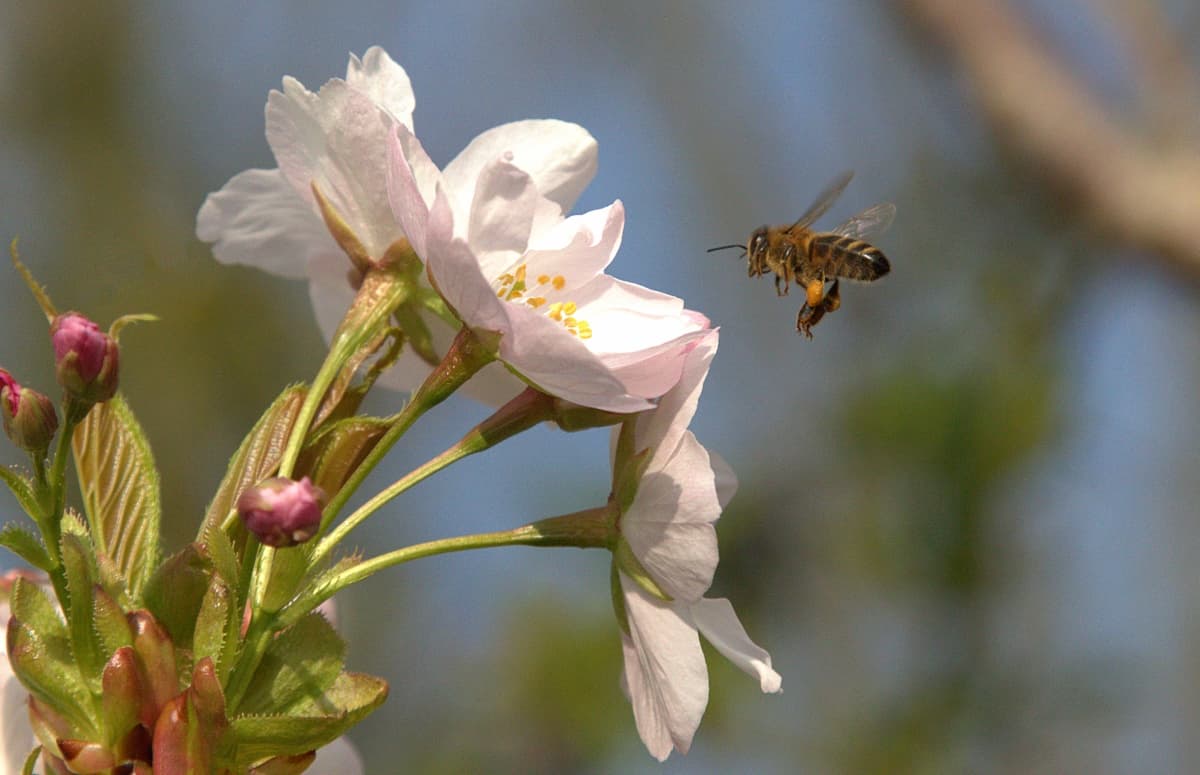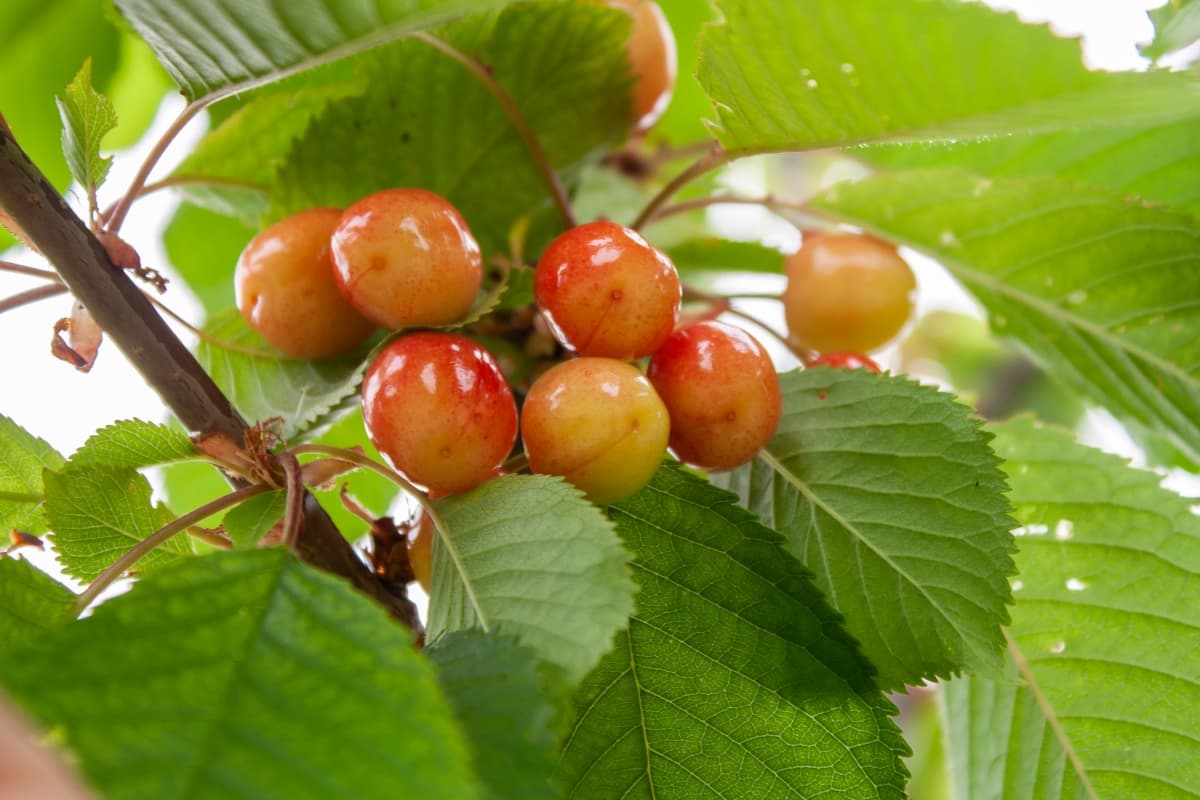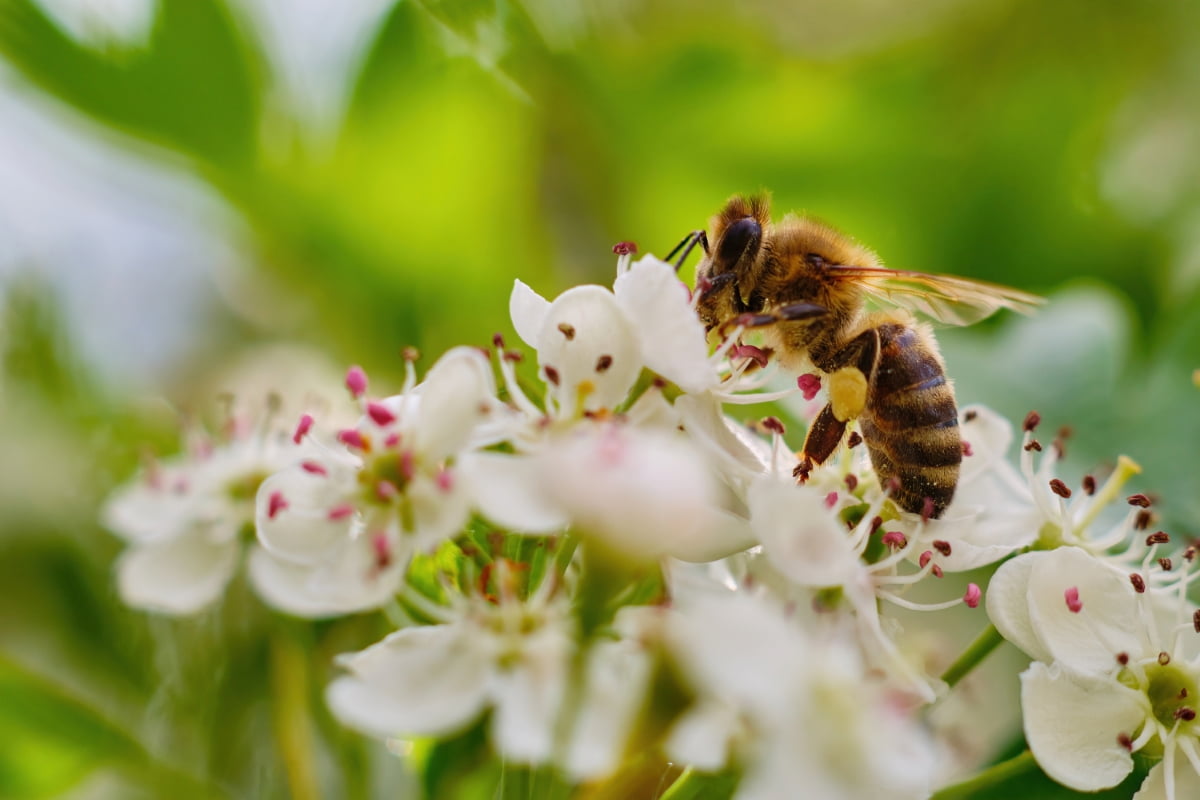When it comes to the art and science of cherry tree cultivation, a recurring question is, “How do I pollinate a cherry tree?” The answer, as you might expect, is multifaceted. To understand cherry tree pollination comprehensively, one must delve into the nuances of the species, their individual pollination needs, and the various external factors that can influence this process.

Factors such as the proximity of different trees (like “How close do cherry trees need to be to pollinate?”) and the role of bees in ensuring a successful fruit set comes into play. Both self-pollinating cherry trees and their counterparts, which require cross-pollination, have their benefits and challenges, which we’ll dive into in this guide.
The Importance of Pollination for Cherry Tree Fruit Production
Pollination is a pivotal process for cherry trees. Without it, cherries wouldn’t produce fruit, leading to a diminished yield or even a barren tree. In pollination, pollen moves from the boy part of the flower to the girl part, which later becomes the cherry fruit. For cherry growers, understanding this process is essential. It ensures the production of delicious cherries for consumers and provides income for those in the cherry cultivation business. Consequently, ensuring effective pollination becomes a cornerstone for anyone invested in cherries.
Factors Affecting Cherry Tree Pollination Success
Various factors play a crucial role in the success of cherry tree pollination. Weather conditions are paramount. Cold temperatures can damage blossoms, while consistent rain during the flowering period can wash away pollen, hindering pollination. Wind direction and speed can either aid or hinder the transfer of pollen, especially in orchards where trees are planted in specific configurations.
Additionally, the availability of pollinators, mainly bees, and the general health of the cherry tree can impact the chances of successful pollination. Regular maintenance, proper fertilization, and pest control can help optimize a tree’s health and increase the likelihood of a bountiful cherry harvest.
Different Types of Cherry Trees and Their Pollination Requirements
Cherry trees come in diverse varieties, each with unique pollination needs. For instance, the Sam Cherry Tree Pollination process requires the presence of a different cherry variety for cross-pollination. Pollen from the Sam cherry tree must be transferred to another variety, such as the Bing, to produce fruit.
In case you missed it: Fertilizing Potted Cherry Trees: Organic, Natural, Homemade, NPK Ratio, When and How to Apply

Similarly, Bing Cherry Tree Pollination depends on cross-pollination. While the Bing is one of the most popular varieties, it will not produce fruit without a pollinator partner like the Black Tartarian or Van cherry varieties. Each cherry type has its own set of compatible pollinator partners, emphasizing the need for careful planning when planting cherry orchards.
Chelan Cherry Tree Pollination
Chelan cherry trees are an early ripening variety, and like the Bing and Sam, they require cross-pollination to bear fruit. Having another pollinator tree, preferably a variety like Bing or Van, planted nearby ensures a better chance of successful Chelan cherry tree pollination. This need for another tree variety underlines the significance of understanding individual tree pollination requirements, especially when plotting an orchard or a few trees in a backyard garden.
Hand Pollination in Cherry Trees
While nature typically handles the pollination process with the help of bees and other insects, sometimes human intervention becomes necessary. Hand pollination in cherry trees is a labor-intensive process, manually transferring pollen from one flower to another using tools like brushes. This method is often employed in areas without natural pollinators or controlled environments like greenhouses. Although tedious, hand pollination can be highly effective, ensuring fruit production even in less-than-ideal conditions.
Best Practices for Maximizing Cherry Tree Pollination in Orchards
To maximize cherry tree pollination in orchards, it’s imperative to implement some best practices. Orchards should be designed to facilitate the movement of pollinators. This might involve planting trees in specific configurations to aid the natural flight patterns of bees.
Furthermore, ensuring that compatible pollinator varieties are planted nearby is crucial. Regular pruning, fertilization, and pest control maintain the health of the trees, making them more receptive to pollination. Orchards can also benefit from introducing bee colonies during the flowering period, boosting the number of available pollinators.
The Role of Bees in Cherry Tree Pollination: Enhancing Fruit Set
Bees are indispensable when it comes to cherry tree pollination. Their foraging habits make them perfect agents for transferring pollen between flowers. As they move from one blossom to another in search of nectar, they inadvertently facilitate pollination, enhancing the fruit set in the process. For many cherry varieties that require cross-pollination, bees are the primary pollinators. Encouraging a bee-friendly environment, avoiding harsh pesticides during flowering, and even renting bee colonies can significantly affect fruit yield.
Self-Pollinating Vs. Cross-Pollinating Cherry Trees: Pros and Cons
Self-pollinating cherry trees are varieties that can produce fruit with their pollen, eliminating the need for a different tree variety. This independence makes them ideal for smaller gardens or areas where space is limited. However, while they guarantee fruit even without a partner, the genetic diversity is limited.
In case you missed it: How to Treat Brown Spots on Cherry Tree Leaves Naturally: Causes, Fix With Effective Organic Home Remedies

On the other hand, cross-pollinating cherry trees require pollen from another variety. This dependency can be viewed as a drawback, especially regarding space and the need for careful planning. But, the genetic diversity resulting from cross-pollination often leads to more robust and flavorful cherries, which many consider a worthy trade-off.
Common Challenges and Solutions in Cherry Tree Pollination
One primary concern is unpredictable weather patterns. Frost can damage blossoms, and prolonged rain can wash away pollen. Growers can use frost protection methods such as wind machines or sprinklers to counter this. Another challenge is the potential scarcity of natural pollinators.
With the decline of bee populations, many orchards face reduced pollination. A solution is to introduce managed bee colonies during the flowering period. Furthermore, incompatible cherry tree varieties can be a hindrance. It’s vital to ensure that trees requiring cross-pollination have a compatible variety nearby. Research and proper orchard planning can mitigate this issue.
Timing and Synchronization of Cherry Tree Blooming for Successful Pollination
If one variety of cherry trees blooms, but its pollinating partner hasn’t, the chances of successful pollination decrease dramatically. For instance, if a Bing cherry tree flowers early, but its pollinating partner, say the Black Tartarian, blooms late, the window of opportunity for effective cross-pollination is lost.
To address this, growers can look into planting varieties with overlapping bloom periods. Monitoring and tracking bloom patterns over the years can also provide insights. With this data, adjustments can be made, such as introducing a new variety or relocating trees, to ensure synchronization of blooming, paving the way for successful pollination.
Strategies for Ensuring Successful Pollination in Backyard Cherry Trees
First, it’s beneficial to understand the pollination requirements of the cherry variety planted. If it’s a self-pollinating variety, there’s less to worry about. However, ensuring a compatible partner is nearby is crucial for trees that require cross-pollination. Another strategy is to promote a bee-friendly environment.
Planting flowers that attract bees and refraining from using pesticides during the cherry flowering period can help. Additionally, hand pollination can be a practical solution for backyard growers. Backyard cherry enthusiasts can look forward to a fruitful harvest with these strategies.
Cherry Pollination Chart
| Cherry Variety | Self-Pollinating (Yes/No) | Compatible Pollinators |
| Bing | No | Black Tartarian, Van |
| Black Tartarian | No | Bing, Van |
| Chelan | No | Bing, Van |
| Stella | Yes | – (Doesn’t require) |
| Lapins | Yes | – (Doesn’t require) |
| Sweetheart | Yes | – (Doesn’t require) |
| Van | No | Bing, Black Tartarian |
In case you missed it: 9 Causes of Dying Cherry Trees and How to Fix Them?

Conclusion
Understanding cherry tree pollination is a comprehensive journey, considering tree varieties, environmental factors, and the invaluable role of bees. By acknowledging and leveraging this intricate dance of nature, one can reap the sweet rewards of bountiful cherry harvests.
- Feed Your Flock for Less: Top 10 Tips to Save on Chicken Feed
- Ultimate Guide to Ossabaw Island Hog: Breeding, Raising, Diet, and Care
- Hatching Answers: The Top 10 Reasons Your Chickens Aren’t Laying Eggs
- Eggs and Economics: Breaking Down the Cost of Raising Backyard Chickens
- Defend Your Greens: Proven Methods to Keep Iguanas Out of Your Garden
- Ultimate Guide to Cinnamon Queen Chicken: A Comprehensive Guide for Beginners
- Ultimate Guide to California Tan Chicken: Breeding, Raising, Diet, Egg-Production and Care
- Ultimate Guide to Marsh Daisy Chicken: Breeding, Raising, Diet, and Care
- 10 Types of Chicken Farming Businesses You Can Start for Profits